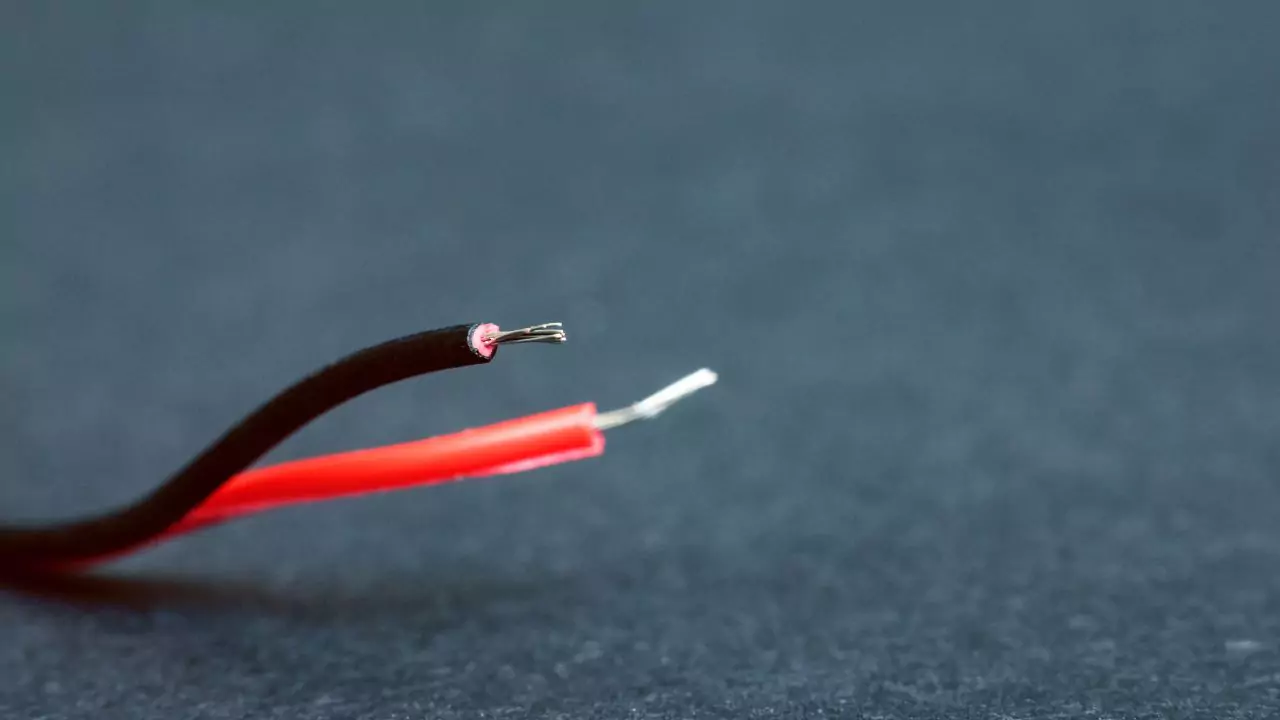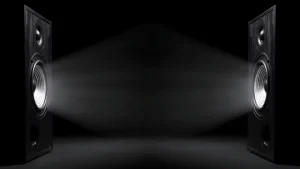For speaker wires with connectors, the positive is often red and the negative is black. Determine which ends are positive and negative based on this color coding.
Then, connect one positive end to the positive terminal on your speaker, and the other positive end to your amplifier or receiver’s positive terminal.
Do the same for the negative wires – connect the negative wire from the speaker to the negative terminal on the amplifier/receiver.
Maintaining proper polarity by following this red=positive, black=negative convention is crucial for accurate sound reproduction.
In This Article:
Understanding Speaker Polarity
Polarity refers to the positive and negative sides of an electrical connection. In speakers, this translates to the direction of electrical current flow. Maintaining correct polarity ensures the speaker cone moves in sync with the audio signal, producing accurate sound.
Why is it Important?
Incorrect polarity isn’t necessarily dangerous, but it can negatively impact sound quality. Imagine a speaker cone supposed to push outward during a high note but pulling inward instead. This mismatch creates a muddy, distorted sound. In some cases, reversed polarity might even damage the speaker over time.
Methods for Identifying Positive and Negative Speaker Wires
There are several ways to identify speaker wire polarity. Let’s explore the most common methods:
- Color coding: Many speaker wires follow a standard color scheme. Typically, red represents positive (+), and black represents negative (-). However, this isn’t always the case, so double-check with the speaker manual or consult the manufacturer if unsure.
- Stripes: Look closely at the wires. Often, one wire will have a stripe (red, white, etc.) while the other remains solid black. In this scenario, the striped wire is positive and the solid black is negative.
- Consult the manual or app: Most speaker manufacturers provide detailed diagrams or pictures in their user manuals, clearly marking the positive and negative terminals. Additionally, some speaker companies offer apps that can help identify wire polarity using your smartphone camera.
- Tracing with manual or app: If your speaker has pre-attached wires, some manuals or apps might guide you in tracing the wires back to the terminals within the speaker itself. This can reveal the positive and negative connections.
- Testing with battery or multimeter (advanced): This method requires a little more technical knowledge. If you’re comfortable using a multimeter or even a simple AA battery, you can briefly touch the wires to the battery terminals (positive to positive, negative to negative). Observe the speaker’s cone movement. If connected correctly, the cone should move outward slightly when touched with the positive battery terminal.
Important Note: Before attempting any testing with a battery, ensure the speaker is disconnected from your amplifier or receiver to avoid damaging the equipment.
Properly Connecting Speaker Wires
Now that you’ve identified the positive and negative wires, it’s time to connect them correctly.
- Why connect them properly? Maintaining proper polarity ensures optimal sound quality and protects your speakers from potential damage.
- Color coding guide: As mentioned earlier, red typically represents positive (+), and black represents negative (-). Match these colors to the corresponding terminals on both your speaker and amplifier/receiver. Double-check the manuals if the colors differ.
- Soldering/wire connection tips: For bare wire connections, ensure clean and secure connections. You can use a soldering iron to create a permanent and reliable connection or twist the bare wires together tightly using lineman’s pliers.
Potential Hazards of Incorrect Speaker Polarity
While incorrect polarity might not cause immediate harm, there are potential downsides:
- Damage to speakers: Over time, reversed polarity can put extra stress on the speaker cone, potentially leading to its deterioration.
- Conflicting sound quality: The most noticeable effect of incorrect polarity is a muddy, distorted, or bass-heavy sound due to the speaker cone moving out of sync with the audio signal.
- Safety risks: In extremely rare cases, using high-powered amplifiers with incorrectly wired speakers might pose a fire risk. However, this is uncommon and typically involves additional factors beyond just reversed polarity.
By following these methods and understanding the importance of correct polarity, you can ensure your speakers are connected properly for optimal sound quality and longevity.




